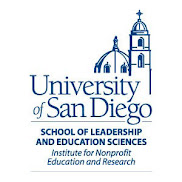Social Media and the Nonprofit Sector
I am a Generation Y-er. I was raised on MTV, email, texting, and YouTube. I can’t remember cell phones pre-PDAs. Thus, social media was a part of growing up and I have rarely questioned its importance.
What I find interesting is that there seems to be an existing apprehension to the use of such public platforms. To me, this apprehension is not just about social media as an isolated tool, but reflects a greater national challenge for the nonprofit sector - the opposition to adapt and change.
Very few can refute that the use of social media can provide nonprofit organizations with opportunity. As recently demonstrated through the Facebook Chase Community Giving program, social media can bring BIG rewards with little effort. I can attest to this as a Board member for the San Diego Chapter of the American Foundation for Suicide Prevention. Our organization invested little time and ZERO dollars (other than regular staff pay) on this campaign. Our supporters did the work (or “clicking”) for us. In the end, we were awarded 25K.
While social media has its obvious advantages, many question its relevance and importance within the nonprofit sector. As I become more and more involved in the trend, I am finding more and more concerns brought up in regards to control.
Unlike most business strategies, social media is built on a culture where the norms for communicating and forming relationships revolve around openness. Some ask: How can nonprofit organizations operate in this world without losing control over their image, message, and resources?
I think that this concern over social media actually reflects a greater issue, the resistance to adapt and change. The default setting for too many nonprofit organizations is to the closed side. The sector has traditionally been taught to secure, protect, and fight for survival (“survival of the fittest”). Far too few organizations today are really willing to evaluate the effectiveness of their operations, make changes for improvement, and incorporate new methods.
However, by refusing to transform, these organizations are not executing control, but becoming disconnected and weakening themselves.
I think that social media demonstrates a mindset that the nonprofit sector should adapt. We should embrace principles like openness, decentralized decision-making, and distributed action. We should let our supporters create the conversation and propel our organizations forward.
Breakthrough Nonprofit Branding: The New Nonprofit Imperative
A select group of nonprofits have jumped on the bandwagon and incorporated this marketing tool into their overall strategic plan. These nonprofits are moving beyond traditional thinking to create a new way to differentiate, strengthen, and establish value for their organizations.
But how does a nonprofit establish a brand?
This afternoon’s keynote speaker, Jocelyne Daw (renowned expert and author of Cause Marketing for Nonprofits: Partner for Purpose, Passion and Profits) offered these tips:
- Discover authentic brand meaning
- Embed brand in organization strategy operation
- Build breakthrough brand communication
- Rally internal brand community
- Engage and mobilize external brand champions
- Cultivate patterns to extend brand reach and influence.
- Leverage brand for long-term enterprise growth
In the for-profit world, a brand is what you do and who you are - as perceived by your public. A big corporation’s greatest asset can be its brand. Branding is the process of creating a clear, consistent message about your company, so that when people see your logo or hear your name, they think about your product. The more they think about your product, the more likely they are to buy it. This is why when companies suffer a major crisis, a re-branding period often occurs to help rebuild their reputation and reestablish public support.
In the nonprofit world, however, I wonder if a brand is less about the general public’s perception, but more about donor’s perception.
I am a believer (as reflected in my last post) that donors don’t give solely based on the brilliance of an organization’s programs. They also don’t give because an organization is popular or hip. And (which some may disagree), they don’t give based on an organization’s past achievements or a long history of success.
The main reason donors give is because of what giving means to them. It is about personal significance. Giving may provide personal joy or satisfaction. It may help them grieve (as in the case of memorial giving) or celebrate (as in the case of the popular trend of birthdays-for-a-cause). Or in the case of big corporations, it may help to improve their bottom line.
Donors see giving as a reflection of you they are and how they want people to perceive them. This is why high-profile celebrities are very selective on the organizations they donate to, and thus, associate themselves with.
In my opinion, a nonprofit brand must articulate two important things:
- What about your organization attracts donors?
- What is it about your organization that makes donors feel good?
First Impressions: Making the Most of Those Crucial First Meetings
As a young nonprofit professional, I have struggled with perfecting my “short and sweet” pitch to get potential donors and supporters from the NO category to the YES category. After all, I like to talk and the meetings big corporations offer never seem long enough.
I remember my first big meeting (which was actually only a couple of years ago). That morning I put on my power suit, brushed my teeth twice, and left extra early (just in case I hit unexpected traffic).
When I arrived at the office, I was greeted with a strong handshake and the comment, “You look to be about my daughter’s age!” Immediately my hands began to sweat.
We sat down and I got right to the point. I talked about the organization, our programs, and the impact we were having on the local community. I offered testimonials, recited statistics, and even provided a couple of colorful pie charts. Yes, I even had a PowerPoint on my laptop. I talked for about 20 minutes straight. I thought the key was to sale the organization, to prove that out of the hundreds of other nonprofits in the area, this was the one to support.
At the end of my speech, I asked if there were any questions. With a stern face the top CEO of the company looked at me and asked,” So what’s in it for us?”
I didn’t know how to respond. Wasn’t knowing that your money was going to a good cause enough?
Needless to say, I didn’t land the sponsorship. I did, however, learn an important lesson about cause marketing.
Today’s first breakout session brought back this experience. Speaker Scott Pansky (partner and co-founder of Allison & Partners) talked about first impressions and the key to making the most of those crucial first meetings.
Here are his tips:
- Come in with an agenda – the three B’s – Be Brief. Be Bright. Be Gone!
- Remember you are “in the door” (and getting in the door is the hardest part!)
- Listen! Ask questions!
- Think about both sides of the table
- Create clear next steps and deliverables
Obviously I failed to do all of these things during my first big meeting. I would like to say that I have perfected my pitch at this point, but I know that I still have a long way to go.
I think the hardest part is demonstrating what a partnership can look like. Potential donors and financial supporters do not want to hear the typical three-tiered promotion. No one really cares if they are a gold, silver, or bronze sponsor. What they really want to know is how connecting their name to your organization will affect their bottom-line.
It is important to understand a potential partner’s needs before you sit down for that first meeting. It is also important to present MARKETING solutions to potential sponsors rather than “fundraising problems”. Everyone knows that as a nonprofit, you are always looking for more financial support. The key to winning that support lies in seeing both sides of the picture.
Maybe that minor in Marketing will come in handy after all. :)
10 Questions Every Nonprofit Should Ask
Let’s face it - communities across the world are suffering. Over the last few months we have heard of terrible devastation internationally as well as in our own community.
As a result of these tragic events, there is an increased demand for the work of nonprofits. This demand, however, far outweighs the current capacity of the overall sector. Thus, nonprofits are being torn in different directions and having to adapt fast. Adaptation is not an easy process (anyone who has gone through a merger can attest to this) and this situation has left the sector in a sensitive and exposed state. However, this vulnerability has created an opportunity for evaluation and growth.
Our society’s needs are so great at the moment, that we don’t have time to work on the micro-level. We must THINK BIG and we must ACT BIG. That’s not to say that we don’t need vision, commitment, direction, and action to make a true impact.
This morning’s opening speaker presented 10 questions every nonprofit should ask:
1. What problems are you willing to solve?
2. How do you know when it is solved?
3. What do you do that is different that matters?
4. What proof do you have that it works?
5. What would you do it you had 10 years to make your difference?
6. How much money and resources do you need to succeed over the next 10 years?
7. What are you willing to do to achieve your mission?
8. What is your promise, your commitment, to each stakeholder?
9. What is you new success story?
10. What’s the most important thing for you to accomplish in the next 90 days to ensure your success?
Personally, I think these are very important questions to ask. But the key is not the questions themselves, but the discussion that is sure to evolve.
Engaging in discussion is energizing and amazing ideas can come from conversation. To often, however, nonprofits fail to communicate. They fail to communicate internally (i.e. management/staff/board) or externally (organization/stakeholders/community) and as a result, the organizations become disjointed and disconnected.
By asking these 10 questions, we can stimulate and energize our organizations and create excitement for work we do. The truth is, people want to talk. They want to find opportunities to brainstorm and engage in a conversation about what is possible. They want to create hope for a better life and a better world. There is real power in open and honest dialogue. Dialogue creates ideas and ideas create commitment. This commitment turns into action. Action, after all, is the key to creating impact.
What do you think? Is your organization talking?
Last Day to Register
Thank you to all of our sponsors, speakers, and volunteers for making this conference possible!
Participate in the conference from the comfort of your desk!
Can’t make the AMA Cause Conference all day, but still want to participate? In an effort to bring the Cause Conference to as many people as possible we are offering live streaming and live blogging for the first time! The cost for live streaming will be $35 per person. This live streaming is brought to you by our education partner, USD and is designed for those who can’t attend the entire conference but are interested in experiencing the keynote speakers sessions from Will Marré and Jocelyn Daw. Get inspired and get informed about the latest in cause marketing, even if you can’t be there in person! Join us online or in person March 10, 2010.
Lead or Disappear
Morning Keynote (8:15 – 9:00 am PT) Will Marré
Have a great cause but too little support? Understand what most potential corporate partners and individual donors say are the mistakes that too many non-profits make. Real case studies from 2009 with clients will showcase potential strategies and a will show compelling messages to turn donor support into an investment instead of a gift.
Breakthrough Nonprofit Branding: The New Nonprofit Imperative
Afternoon Keynote (1:00–1:45 pm PT) Jocelyn Daw
Learn how to move beyond traditional thinking about brands and branding. Learn strategies and purposeful ways to build and manage your brand. Identifying how your organization can stand out in the cacophony is vital in today’s environment and essential in differentiating, strengthening and creating value for the organization.
Non-Profit Olympiad Finals
Join us once again as SD Social Venture Partners brings the finalists in the category of Education from their exciting Investee selection process to compete on stage, sharing their best practices. The audience votes, and two winners will be selected to receive either a $10,000 video package or a $10,000 web/graphics package from UCSD Extension’s Marketing and Digital Arts Center (DAC). This year’s competing organizations include:
- Health Sciences High School and Middle College Charter School
- Community Coaching Center
- Nativity Prep Academy
- North County Trade Tech Charter High School
- Reality Changers
- Words Alive
Meet the Cause Conference Bloggers
About the bloggers...
Heat
 her Carpetner, Nonprofit Leadership 601
her Carpetner, Nonprofit Leadership 601Heather has served as a Nonprofit Manager, Researcher, Trainer, and Blogger to nonprofit organizations for over eight years. She earned her M.M. in Nonprofit Administration from North Park University in Chicago, Illinois and she currently pursues her PhD in Leadership at the University of San Diego where she serves as a Researcher at the Caster Family Center for Nonprofit Research. Heather teaches and presents on a variety of topics in the nonprofit sector, is an avid social media user and authors the well-known Nonprofit Leadership 601 blog.
Heather is also author and creator of three nonprofit management toolkits: Nonprofit Operations, Setting up a Nonprofit Office, and Starting a Nonprofit, and participates on a variety of national nonprofit committees including, but not limited to, the Nonprofit Sector Workforce Coalition, the Next Generation Leadership Forum and the Nonprofit Congress. Her current research interests include: nonprofit leadership, nonprofit workforce issues, capacity building for nonprofits, service-learning, nonprofit technology, and nonprofit education.
Her specialties include nonprofit leadership, nonprofit workforce issues, capacity building for nonprofits, service-learning, nonprofit technology, nonprofit finance and nonprofit education.
Jessica Van Der Stad blogging from the AMA Cause Conference Blog
- Resource & Sustainability Manger, ACCION San Diegov(twitter.com/ACCIONsd and facebook.com/ACCIONsd)
- Fundraising Chair, American Foundation for Suicide Prevention - San Diego Chapter (twitter.com/AFSPSanDiego and facebook.com/AFSPSanDiego)
 assion for non-profit work developed while traveling and studying internationally as a student. While living in Lithuania, she volunteered in an understaffed state-run orphanage for babies under 3 years old. Through this experience Jessica realized that by doing little things with great love, anyone can make a BIG difference.
assion for non-profit work developed while traveling and studying internationally as a student. While living in Lithuania, she volunteered in an understaffed state-run orphanage for babies under 3 years old. Through this experience Jessica realized that by doing little things with great love, anyone can make a BIG difference.Shortly after earning a Bachelor's Degree in Interpersonal and Organizational Communication from Azusa Pacific University, Jessica set out to pursue a career doing what she loved, helping others. In 2009 she joined ACCION San Diego, a local nonprofit that works to create increased income and access to jobs for low-to-moderate income, self-employed men and women by providing small loans and business support services. There she developed a professional volunteer program, manages the organizational resource programs, and assists with grant writing and fundraising.
Jessica also currently serves as the Fundraising Chair for the San Diego Chapter of the American Foundation for Suicide Prevention (AFSP). After losing her father to suicide in 2008, Jessica found an unyielding call to become involved in preventing suicide, educating the public about mental disorders, and reaching out to survivors of suicide loss and people at risk. Jessica is currently spear-heading the 1st-ever STRIKE OUT SUICIDE community bowling event to help raise funds to create a county-wide survivor outreach program.
In her spare time, Jessica can be found tweeting, updating Facebook, researching new social media activities to generate visibility for the organizations she works with, or just spending time with her two rescue dogs, Bruno and Marley.
Jessica is thrilled to have the opportunity to guest blog for the AMA Conference and encourages all blog-readers to comment, ask questions, and interact!












